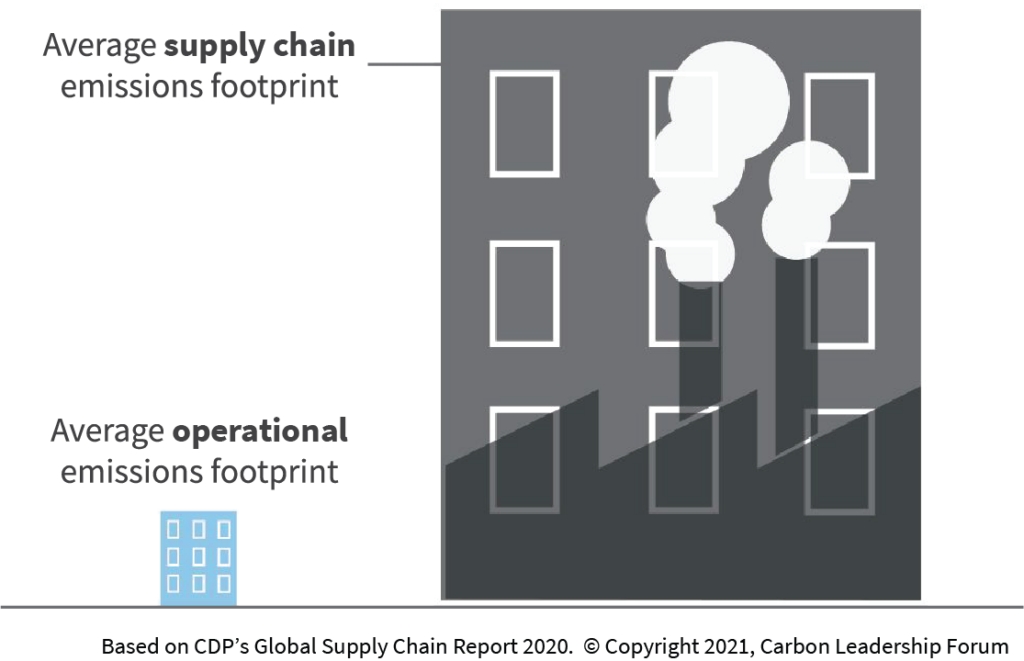This document provides an overview of the opportunity for building owners, tenants, and developers to reduce greenhouse gas emissions of construction materials through their procurement policies. More information about opportunities for addressing embodied carbon with policy can be found in the Carbon Leadership Forum’s Owner Toolkit.
Version: May 3, 2021
Purchasing emissions are significant
Businesses have taken a leading role in setting emissions reductions targets from operations by committing to net-zero, purchasing renewable energy, and improving the efficiency of their building portfolios. A growing number of organizations are also addressing their supply chain emissions.
Supply chain emissions, also referred to as upfront embodied carbon, are the greenhouse gas emissions associated with the upstream extraction, transport, and manufacturing of materials before a product is sold to a consumer.
A company’s purchasing emissions are significant. Data collected through CDP Supply Chain in 2020 reveals that companies’ supply chain emissions are 11.4 times higher than their operational emissions on average (see Figure 1). This means that when companies strive for supply chain emissions reductions, they can have greater than 10 times the positive impact, creating a ripple of positive action throughout their value chains.

Figure 1. On average, a company’s supply chain emissions are 11.4 times larger than their operational emissions (CDP Supply Chain).
Investors, developers, and public and private building owners and tenants can leverage their purchasing power to decarbonize the supply chains associated with purchased products by adopting embodied carbon procurement policies to source low-carbon products and engage suppliers in targeting a net-zero supply chain. This document focuses on strategies for reducing these supply chain emissions that are related to construction materials.
Transparency is key
Requiring transparency from manufacturers enables companies to set emissions targets and track progress towards their goals. Many companies focus on using supply chain tracing and holistic supplier evaluation tools with key suppliers that they purchase directly from to implement their supply chain sustainability strategies and goals. However, limiting the focus to key suppliers may not influence sourcing of carbon-intensive construction materials purchased indirectly through a contractor on a project-by-project basis.
For building materials, life cycle assessment data can be collected in the form of an environmental product declaration (EPD) to help companies track and evaluate upfront embodied carbon, even when purchased by a third party.
What is an environmental product declaration?
An environmental product declaration (EPD) discloses a product’s environmental footprint. Type III EPDs are third party-verified documents written in conformance with standards established by the International Standards Organization (ISO) that report the environmental impacts of a product based on life cycle assessment.
EPDs may report a variety of life cycle impacts, including global warming potential (GWP). GWP is quantified in kilograms of CO2 equivalent (kg CO2e). For more information, see Guidance to Embodied Carbon Disclosure.
Getting started
Whether getting started on a few pilots or integrating practices across a company’s portfolio, there are several key strategies to keep in mind:
- Start with a few high-impact materials that are typically purchased in large quantities
- Require transparency in the form of EPDs
- Evaluate products for carbon instead of just cost, and set emissions reductions targets for each material
- Track success by requiring project teams to submit material quantities and embodied carbon data